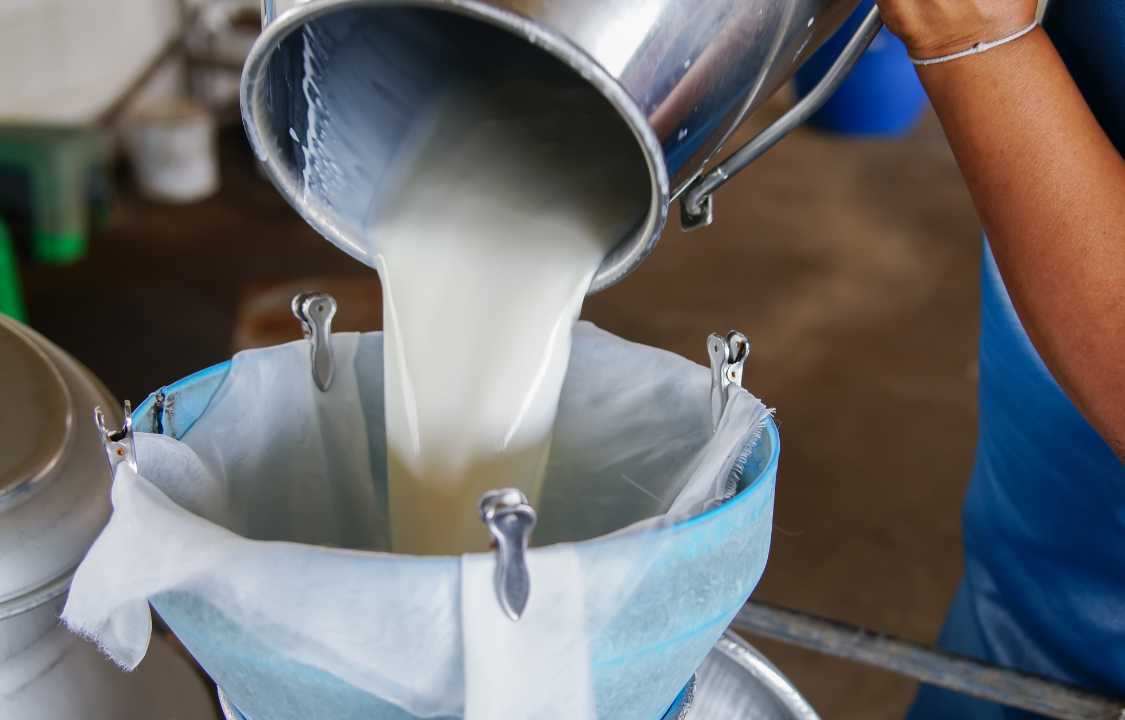Health Benefits, Health Care
Raw Milk Is Growing in Popularity—But Is it Safe to Drink?
In recent years, the debate over raw milk versus pasteurized milk has gained momentum, fueled by claims of superior nutrition and perceived health benefits associated with raw milk consumption. While the availability of raw milk has increased in many states, it’s essential to navigate this topic with caution, as it involves complex issues of food safety and nutritional value. This article aims to explore the growing interest in raw milk, the distinctions between raw and pasteurized milk, and the associated risks and benefits.
The Changing Landscape of Raw Milk Legislation
The legal landscape surrounding the sale of raw milk is undergoing gradual transformation, with 27 states now permitting the direct sale of raw milk to consumers. Various distribution methods have emerged, including retail options, farm-to-consumer sales, and herd shares, all of which come with specific legislation designed to protect consumers. As consumer demand for raw milk continues to rise, experts anticipate further expansion of legislation governing its sale.
According to a 2022 consumer report, nearly 5% of U.S. adults consumed raw milk at least once in the past year, reflecting a growing interest in this unprocessed dairy product. However, it’s crucial to delve deeper into the motivations behind choosing raw milk and to examine the safety concerns associated with its consumption.
Understanding Raw Milk
Raw milk is essentially milk that has not undergone the pasteurization process, which involves heating milk to a specific temperature to eliminate potentially harmful bacteria. In contrast, raw milk goes directly from the cow’s udder to the consumer without undergoing this pathogen-killing step.
The historical significance of pasteurization cannot be overstated. In the early 20th century, when pasteurization wasn’t legally mandated, milk-related illness outbreaks accounted for a staggering 25% of all disease outbreaks. However, with the widespread adoption of pasteurization, milk and milk products’ association with outbreaks dropped to less than 1% by the beginning of the 21st century. This practice significantly reduced contamination and the incidence of human illnesses.
Raw Milk vs. Pasteurized Milk: Nutritional Differences
One of the primary motivations behind the consumption of raw milk is the belief that it offers superior nutrition compared to its pasteurized counterpart. While it is true that pasteurization can result in a minor reduction in certain vitamins found in milk, such as vitamin B12, vitamin E, vitamin C, folate, and vitamin B2 (riboflavin), the overall impact on milk’s nutritional value is relatively minimal. These vitamins are naturally present in milk in relatively low quantities.
Although pasteurized milk may contain slightly lower levels of certain vitamins, it offers peace of mind concerning safety. Raw milk poses inherent risks due to the potential presence of harmful pathogens, including Campylobacter, Cryptosporidium, E. coli, Listeria, Brucella, and Salmonella. Consumption of raw milk contaminated with these pathogens can lead to foodborne illnesses, characterized by symptoms such as diarrhea, nausea, fever, vomiting, and fatigue. In severe cases, food poisoning can result in kidney and brain damage, extreme dehydration, and even death.
Historical records demonstrate that outbreaks of milk-related illnesses have dramatically declined with the widespread adoption of pasteurization. Nevertheless, reports of people falling ill after consuming raw milk persist. For instance, in 2005, an outbreak of E. Coli infection linked to raw milk occurred in Oregon and Washington states, affecting mostly children. In another instance, from 2007 to 2009, 30 cases of foodborne illnesses in the United States were associated with raw milk consumption. According to the Centers for Disease Control and Prevention (CDC), raw dairy products are 840 times more likely to cause illness than pasteurized dairy products.
Furthermore, some pathogens present in raw milk can lead to life-threatening conditions such as Guillain-Barré syndrome and hemolytic uremic syndrome, making the risks associated with raw milk consumption even more concerning.
Considering these safety concerns, registered dietitians consistently advise against consuming raw milk. The rise in raw milk’s popularity can be partially attributed to misinformation spread through social media channels. Even when consumers source raw milk from trusted farms, there remains an inherent risk of contamination, as multiple factors can contribute to bacterial growth in raw milk, including contact with feces, mastitis infections in dairy udders, and the presence of diseases in cows.
Populations at higher risk for severe illness due to raw milk consumption include children, pregnant women, adults over 65, and individuals with compromised immune systems. For these vulnerable groups, the consequences of consuming contaminated raw milk can be particularly severe.
Conclusion
In the ongoing debate between raw milk and pasteurized milk, it is crucial to prioritize safety and informed decision-making. While raw milk enthusiasts may tout its potential nutritional benefits, the evidence suggests that the marginal increase in certain vitamins does not outweigh the serious safety risks associated with its consumption.
The pasteurization process, a historical breakthrough in food safety, has significantly reduced the incidence of milk-related illnesses and outbreaks. Raw milk’s inherent risks, including the presence of harmful pathogens, continue to pose a genuine threat to public health. Despite the availability of raw milk in some states, experts strongly advise against its consumption, especially for vulnerable populations.
Ultimately, the choice between raw and pasteurized milk should prioritize safety and adherence to established food safety standards. It is essential for consumers to make informed decisions regarding the risks and benefits associated with their choice of milk, keeping in mind the potential consequences of consuming raw milk, which can range from mild discomfort to severe illness and even death for some individuals.

